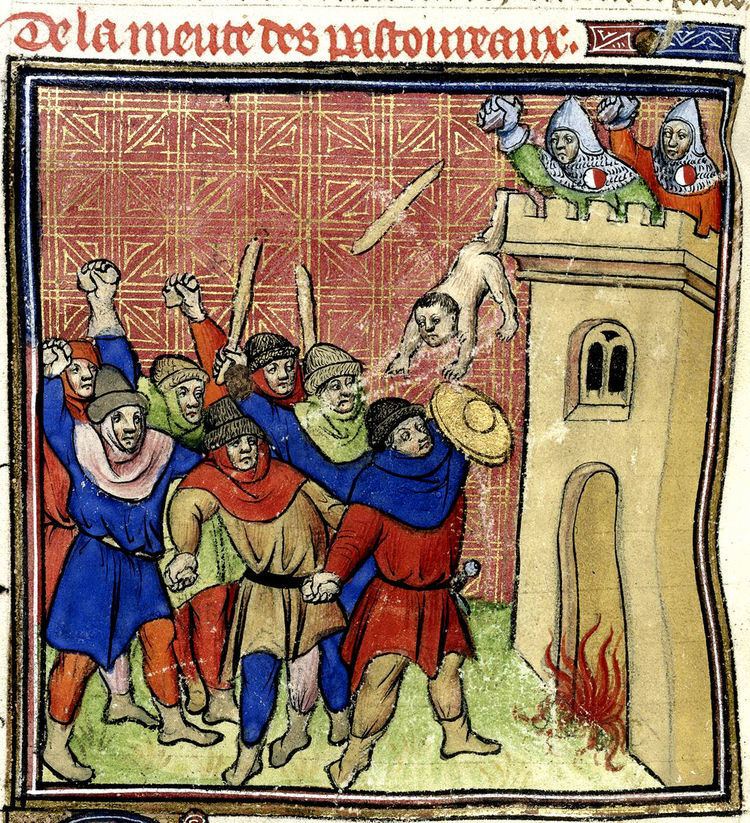Start date 1320 | ||
 | ||
Shepherds crusade 1320
The Shepherds' Crusade of 1320 was a popular movement in northern France aimed to help the Reconquista of Iberia.
Contents
Causes
The causes are complex; however, at that time a wake of famines had set in related to climatic changes (the "little ice age") and the economic situation for the rural poor had deteriorated. Furthermore, there were prophecies and talks about a new crusade. Also, indebtedness to Jewish moneylenders had been apparently eliminated with their eviction by King Philip the Fair in 1306; however, his son Louis X brought them back and became a partner in the recovery of their debts.
Beginnings
The crusade started in May 1320 in Normandy, when a teenage shepherd claimed to have been visited by the Holy Spirit, which instructed him to fight the Moors in Iberia. Similar to the 1251 crusade, this movement included mostly young men, women, and children. They marched to Paris to ask Philip V to lead them, but he refused to meet with them at all. While in Paris they liberated prisoners in the Grand Châtelet.
Progress
Instead they marched south to Aquitaine, attacking castles, royal officials, priests, and lepers along the way. Their usual targets, however, were Jews, whom they attacked at Saintes, Verdun-sur-Garonne, Cahors, Albi, and Toulouse, which they reached on June 12. Pope John XXII, in Avignon, gave orders to stop them. When they eventually crossed into Spain, their attacks on the Jews were well-known, and James II of Aragon vowed to protect his citizens. At first they were prohibited from entering the kingdom at all, but when they did enter in July, James warned all his nobles to make sure the Jews were kept safe.
As expected the shepherds did attack some Jews, especially at the fortress of Montclus, where over 300 Jews were killed. James's son Alfonso was sent out to bring them under control. Those responsible for the massacre at Montclus were arrested and executed. There were no further incidents and the crusade dispersed.
Aftermath
This "crusade" is seen as a revolt against the French monarchy, somewhat like the first Shepherds Crusade. Jews were seen as a symbol of royal power, as they more than any other population relied on the personal protection of the king both in France and in Aragon, and were often a symbol of the royal economy as well, hated by poor and heavily taxed peasants. Only a few years previously, the Jews had been allowed to return to France, after being expelled in 1306. Any debts owed to the Jews were collected by the monarchy after their expulsion, which probably also contributed to the peasant connection of the Jews with the king.
In 1321, King Philip fined those communities in which Jews had been killed. This led to a second revolt, this time among the urban population, although later chroniclers invented the idea of a "cowherds' crusade," a second wave of the Shepherds' Crusade. Although this never occurred, there were, however, more attacks on Jews as a result of the fines.
